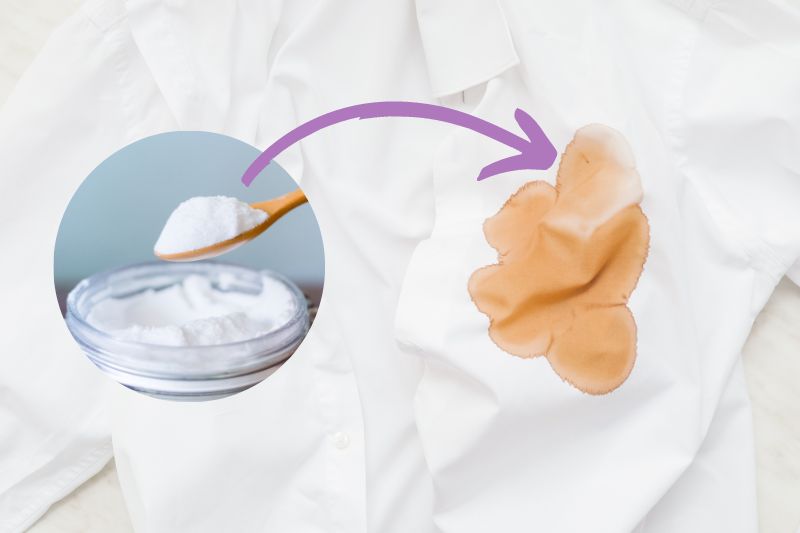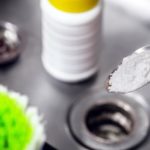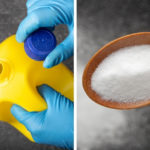Stains can be a real bother when they appear on your favourite clothing or furniture, but don’t worry! There’s a simple and versatile product that can help you eliminate those stubborn marks for good, which you likely already have in your cupboards: bicarbonate of soda.
This common household ingredient can be used to clean many things, from clothing and carpets to bathroom fixtures.
It’s often mixed with water or white vinegar to help cut through grease, limescale, and the toughest of stains. But what is the best way to use bicarbonate of soda for stain removal?
In this article, we’ll share some of our top tips for using bicarbonate of soda to remove stains from around your home.
Whether you’re dealing with wine, sweat, or grease stains, you will soon have all the information and confidence you need to tackle these marks head-on.
1. Make Sure You’re Using the Right Product
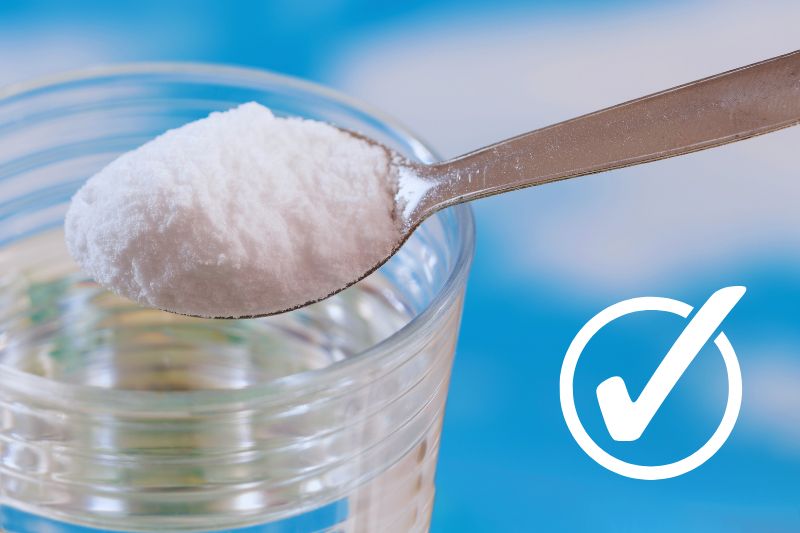
When using bicarbonate of soda to treat stains, it is essential that you are using the right product. This ingredient has various names, including baking soda and sodium bicarbonate. However, it is important to note that baking powder is not the same as baking soda or bicarbonate of soda.
Many people assume these two products are interchangeable, but there are key differences between them. Yes, baking powder does contain baking soda/bicarbonate of soda, but it also contains cream of tartar and a filler, such as cornstarch or rice flour, which helps absorb excess moisture.
This is why we highly suggest you stick with pure bicarbonate of soda if you want to use this natural cleaning method; these added ingredients present in baking powder will take away some of the cleaning power of your stain remover, leaving you with less than satisfactory results.
2. Learn How to Make a Bicarbonate of Soda Cleaning Paste
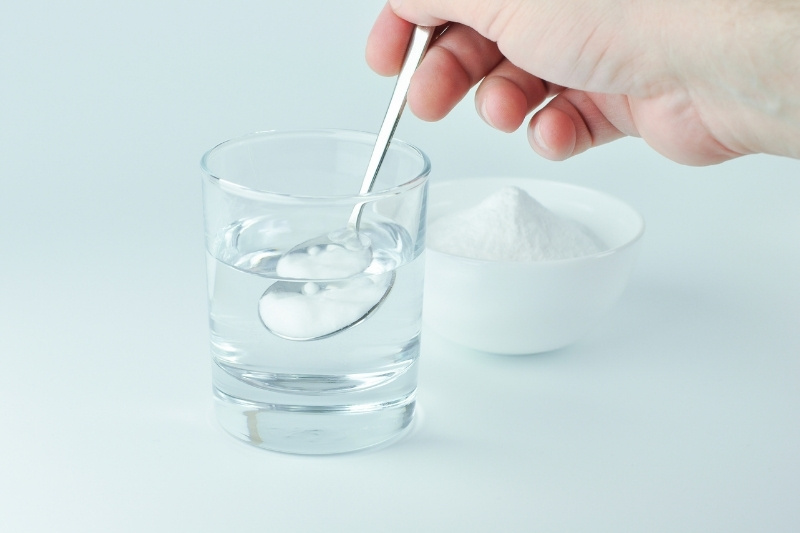
One of the most common ways of using bicarbonate of soda to remove stains is by creating a thick cleaning paste.
This can then be applied to the stain and left to sit and work its magic before being washed or hoovered away.
To make this miracle stain remover paste, mix two parts of bicarbonate of soda with one part warm water.
You can decide what measurement you use for this recipe – cups, tablespoons, or teaspoons – but we suggest using 4 tbsp of bicarbonate and 60ml of water when you’re only dealing with a small stain. For bigger stains, use more ingredients.
Also, this ratio is intended as a guideline. Switching up the bicarb to water balance will give you different consistencies which are suited to different jobs. Feel free to alter the 2:1 ratio if you desire a slightly thicker or thinner cleaning paste.
3. Know Which Stains to Target
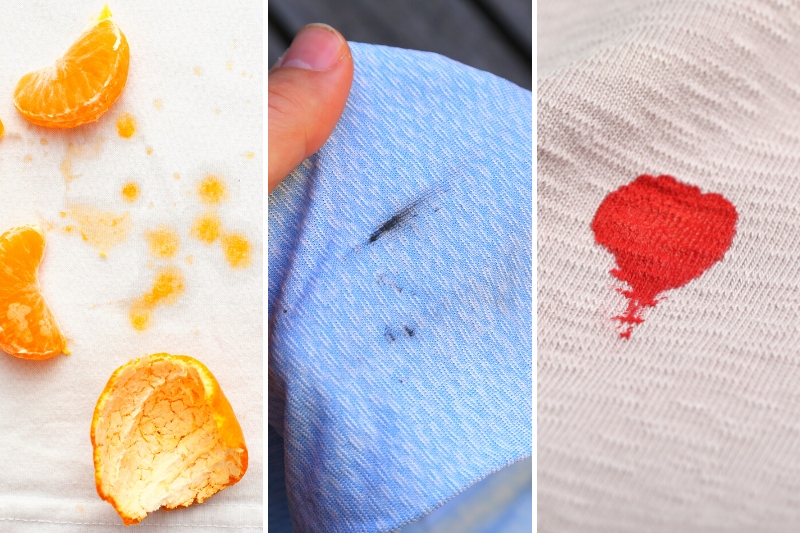
Bicarbonate of soda can lift a wide variety of stains from your clothing when mixed with water.
This is because the bubbling action that occurs when the ingredients are combined allows the bicarbonate to infiltrate fabrics and lift stubborn stains from the surface. It will also eliminate any foul odours clinging to the fibres as well.
In general, dry stains will benefit most from the cleaning paste mentioned above, while wet stains can be treated with bicarbonate powder directly.
Some of the stains bicarbonate of soda will have the best results on include the following:
- Blood stains – Dampen the blood stain with water before covering it in the bicarbonate cleaning paste. Always use cold water to dampen the material, as hot water will cause the blood to further set into the fabric. Leave the paste for an hour before rinsing it away.
- Grease or oil stains – Sprinkle an even layer of bicarbonate of soda onto the grease or oil stain and leave it to sit for 30-60 minutes before brushing it away. The powder will slowly clump up as more of the stain is lifted from the fabric. If needed, scrub the area with a little washing-up liquid afterward to remove any remaining grease.
- Wine or juice stains – Cover the wine stain with a layer of dry bicarbonate of soda. Leave this to sit for a few minutes, and then use hot water to flush the stain from the opposite side of the fabric. Where possible, treat wine and juice spills immediately for the best results.
- Sick stains – Sprinkling dry bicarbonate of soda onto any areas stained with vomit will help to absorb the liquid and potent smells. Ideally, this needs to be left for 1 hour before the bicarbonate is brushed away.
- Sweat stains – Sweat marks will need to be treated with the bicarbonate cleaning paste. More stubborn stains will need the paste left on for 1-2 hours to absorb the smell as well as remove any stains. However, lighter stains will come out in a few minutes.
Once the bicarbonate has been removed from the fabric, you will need to wash your garment as usual to eliminate any last traces of the stain and the cleaner.
Before using any of these stain removal methods on brightly coloured or darker items, try out a swatch test on an inside seam or somewhere inconspicuous to check the fabric for colour-fastness. You don’t want faded patches instead of a stain if it can be avoided.
4. Place Bicarbonate of Soda Directly in Your Washing Machine for a Deeper Clean
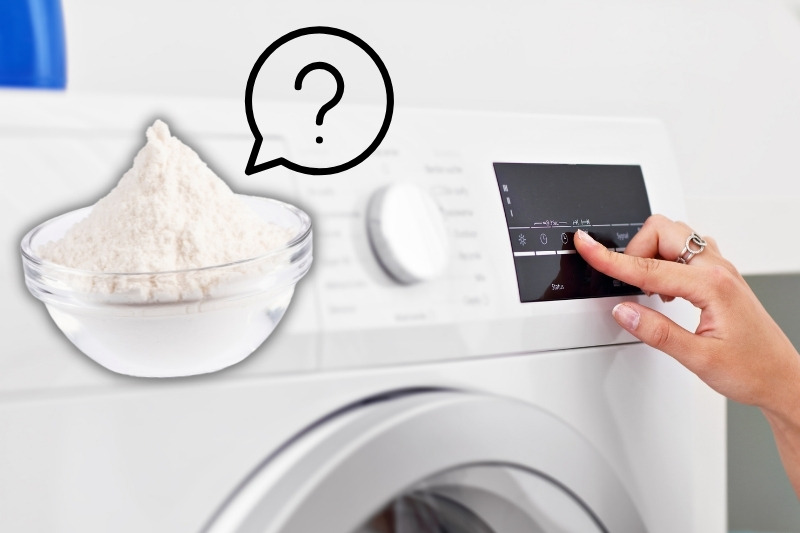
Bicarbonate of soda doesn’t just have to be used as a pre-treater for your laundry; you can also add it directly into your washing machine alongside your detergent to get great results in the wash.
Firstly, it can be used to tackle mild stains. Simply adding half a cup of bicarbonate of soda to the drum alongside your laundry will help remove odours and fight stains.
If you’re doing a cold wash, we suggest dissolving this in a little water before adding it to the drum to ensure it is properly distributed during the wash cycle.
Bicarbonate of soda isn’t just good at stain removal, it also helps brighten your whites. It’s perfect when washing shirts and white bed linen and is a great alternative to store-bought whitening products such as bleach.
You get the same results without being exposed to harmful chemicals. If desired, you can also add half a cup of white vinegar to your wash to really amp up the natural cleaning power.
5. Mix With White Vinegar to Remove Stains From Carpets and Furniture
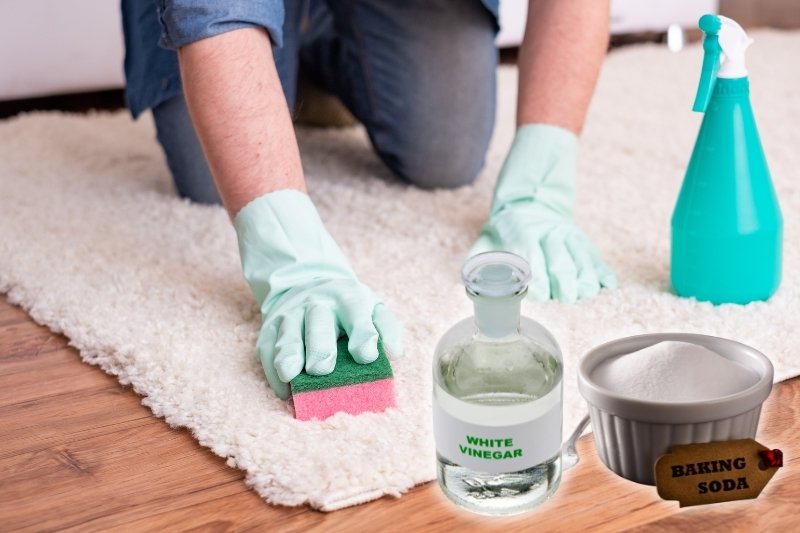
Although bicarbonate of soda is most commonly used to remove stains from clothing, it can also be used on carpets and soft furnishings. However, as these items cannot go in the wash, you will have to use a slightly different stain-removal method.
According to The Express, the best way to lift stains from your carpet is to:
- Mix together a 2:1 ratio of bicarbonate of soda and white vinegar to create a paste.
- Apply the cleaning paste to the stain and gently rub it into the fabric.
- Leave the stain remover to sit overnight so that it completely dries.
- Hoover up the dried paste.
- Repeat as necessary until the stain has been fully lifted.
Before applying this cleaner to a large section of your carpet or furniture, we suggest doing a patch test on an inconspicuous part of the material.
This will ensure that you don’t cause any damage to the fabric while trying to lift the stain. If preferred, store-bought carpet and furniture cleaners can always be purchased instead.
Also, rather than using a paste made from bicarbonate of soda and vinegar, you can alternatively stick with our original bicarb-water paste outlined in Tip #1.
This will have a milder (but still effective) clean and is perfect for more delicate items that damage when exposed to acidic solutions.
6. Use Bicarbonate of Soda to Deodorise Your Home
As you may have gathered by now, bicarbonate of soda doesn’t just remove stains, it also removes odours.
This means it can be used to eliminate any lingering odours that remain on your clothing, carpeting, or furniture after a stain has been removed.
Some of the most effective ways of using bicarbonate of soda as a deodoriser include:
- Sprinkling some dry powder into your laundry basket to keep any nasty pongs at bay while your clothing is waiting to be washed.
- Covering any smelly sections of your carpet or rug with bicarbonate of soda powder and leaving it to sit for 20 minutes before hoovering it up.
- Creating your own “Febreze” and spraying it liberally over any soft furnishings that need to be deodorised.
If you want to have a go at making this deodorising spray, you will need to mix 4 tbsp of bicarbonate with hot water in a spray bottle.
Shake to ensure the powder is evenly distributed, and then leave the solution to cool. You can then add your favourite essential oil if desired for a refreshing smell and extra odour-boosting qualities.

Hannah has a passion for cleaning. She worked her way around Australia by cleaning hostels in exchange for free accommodation and used her cleaning skills to bag a job as a chalet host for a luxury ski company in France.
